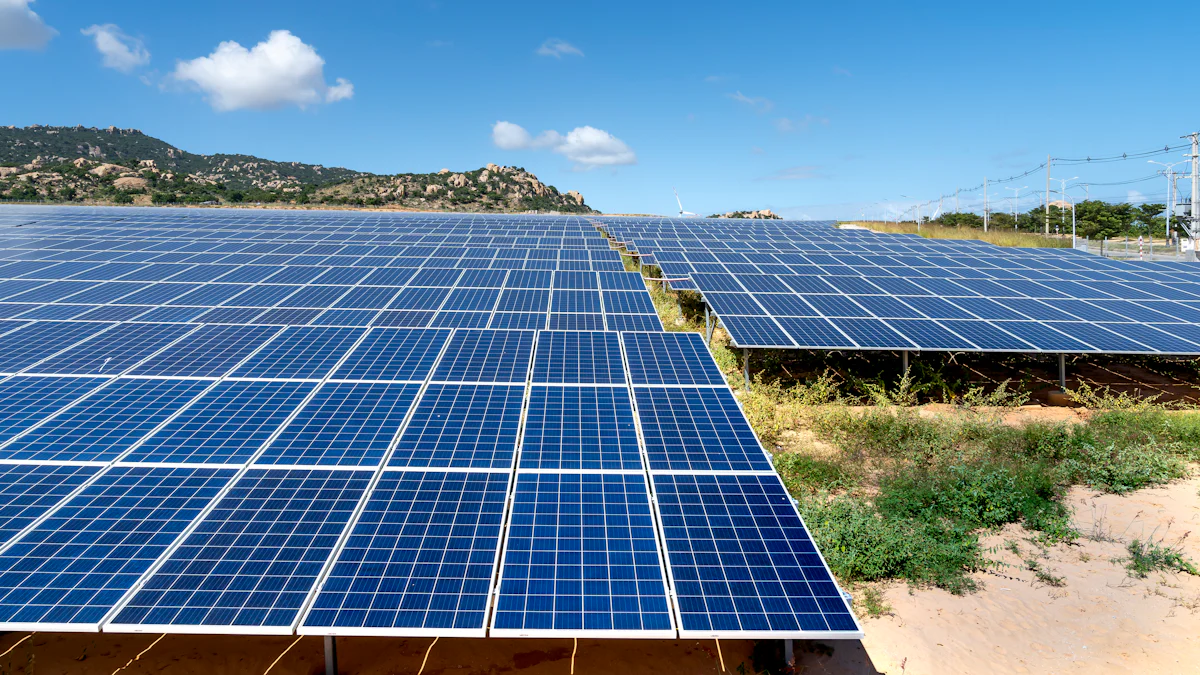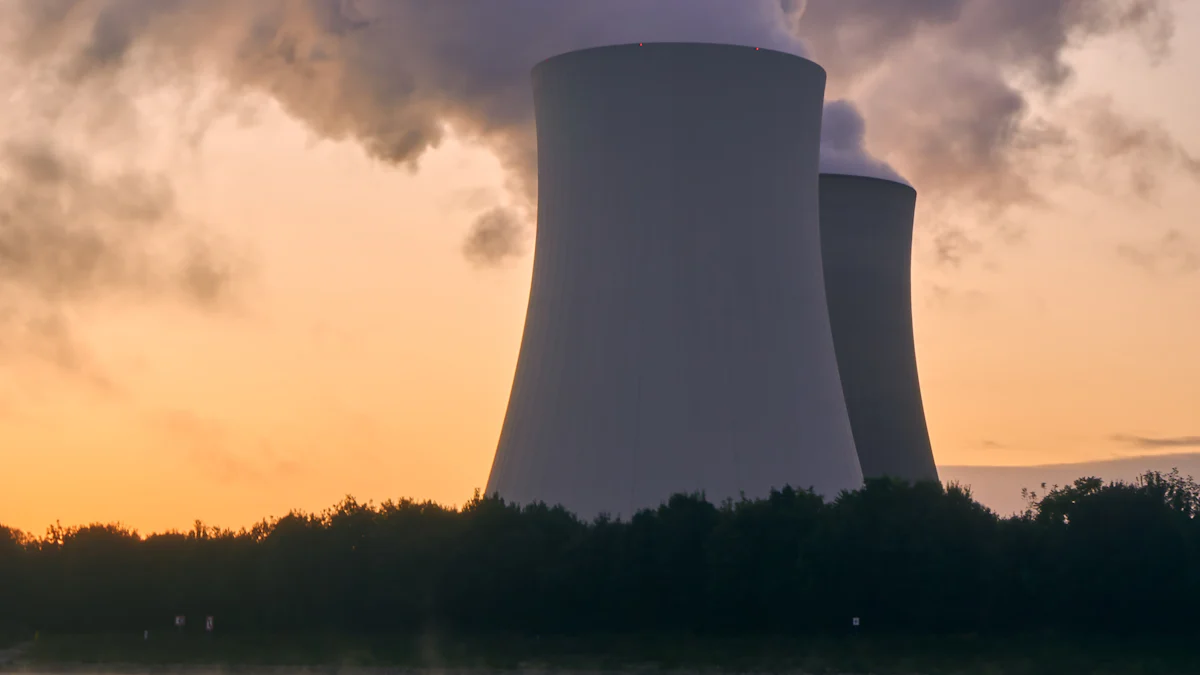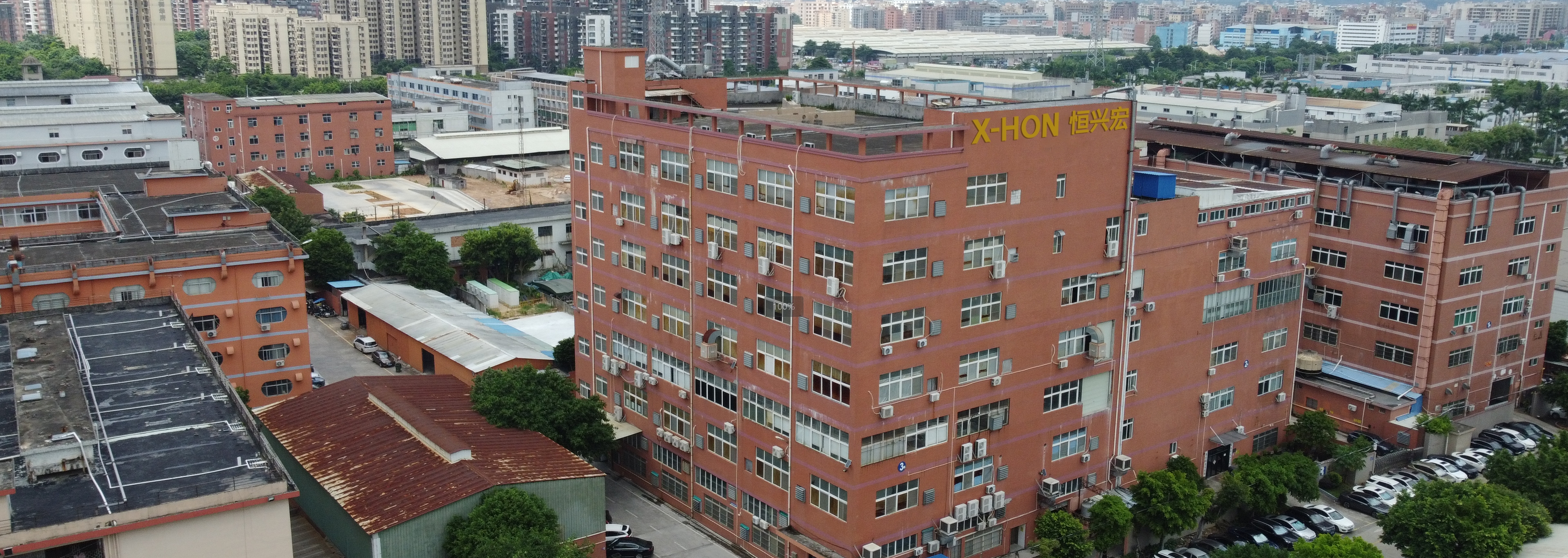Cooling Solutions Compared for Industrial Needs

Industrial cooling solutions play a crucial role in maintaining optimal temperatures in various sectors. These systems ensure machinery operates efficiently, preventing overheating and potential damage. The significance of cooling solutions becomes evident when considering their immediate relevance in industrial settings. Industries rely on these systems to maintain productivity and safety. With over 34,400 organizations worldwide dedicated to this field, the demand for effective cooling solutions continues to grow. Key questions arise: What are the available cooling solutions, and why are they so important? Understanding these aspects is essential for industries aiming to enhance operational efficiency.
Overview of Industrial Cooling Solutions
Industrial environments demand effective cooling solutions to maintain optimal operational conditions. Various systems cater to these needs, each with unique mechanisms and benefits. This section explores three primary cooling solutions: Evaporative Cooling, Chilled Water Systems, and Air-Cooled Systems.
Evaporative Cooling
How Evaporative Cooling Works
Evaporative cooling systems harness the natural process of water evaporation to lower air temperatures. These systems draw warm air through water-saturated pads, where the air absorbs moisture and cools down. This method proves particularly effective in dry climates, where the air's low humidity enhances the cooling effect.
Advantages of Evaporative Cooling
Evaporative cooling offers several benefits:
Energy Efficiency: These systems consume significantly less energy compared to traditional air conditioning, reducing operational costs.
Cost-Effectiveness: Installation and maintenance expenses are generally lower, making them an attractive option for budget-conscious industries.
Environmental Impact: By avoiding harmful refrigerants, evaporative coolers present a more eco-friendly alternative.
Disadvantages of Evaporative Cooling
Despite its advantages, evaporative cooling has limitations:
Humidity Dependency: Its effectiveness diminishes in humid environments, where the air's moisture content is already high.
Water Usage: These systems require a consistent water supply, which may not be feasible in areas with water scarcity.
Chilled Water Systems
How Chilled Water Systems Work
Chilled water systems utilize a central plant to chill water, which is then circulated through a network of pipes to air handlers throughout a facility. This setup allows for efficient and consistent temperature control across large spaces, making it ideal for facilities requiring continuous cooling.
Advantages of Chilled Water Systems
Chilled water systems provide several key benefits:
Consistent Cooling: They offer reliable temperature regulation, crucial for operations like data centers and manufacturing plants.
Energy Efficiency: Integration with heat recovery technologies can enhance energy efficiency, supporting sustainable practices.
Scalability: These systems can be scaled to meet the cooling demands of large industrial operations.
Disadvantages of Chilled Water Systems
However, chilled water systems also have drawbacks:
Complex Installation: The setup involves extensive piping and infrastructure, which can be costly and time-consuming.
Maintenance Requirements: Regular maintenance is necessary to ensure optimal performance and prevent system failures.
Air-Cooled Systems
How Air-Cooled Systems Work
Air-cooled systems use air as the primary medium for heat exchange. These systems circulate a liquid that absorbs heat from equipment, which is then cooled by air. This method eliminates the need for a water supply, simplifying installation and maintenance.
Advantages of Air-Cooled Systems
Air-cooled systems offer distinct advantages:
Simplicity: They are easier to install and maintain due to the absence of complex piping and water requirements.
Versatility: Suitable for environments where water conservation is critical or where water resources are limited.
Reliability: These systems provide dependable cooling for various industrial applications.
Disadvantages of Air-Cooled Systems
Despite their benefits, air-cooled systems face certain challenges:
Efficiency Limitations: They may not be as energy-efficient as water-based systems, especially in larger operations.
Noise Levels: The operation of fans and compressors can generate noise, which may be a concern in noise-sensitive environments.
Comparing Cooling Solutions

Cost Analysis
When evaluating cooling solutions for industrial needs, cost plays a pivotal role. Initial installation expenses can vary significantly among different systems. Evaporative cooling generally presents a more budget-friendly option due to its simpler setup and lower material costs. In contrast, chilled water systems often require substantial investment in infrastructure, including extensive piping and central plant equipment. Air-cooled systems fall somewhere in between, offering moderate installation costs without the need for a water supply.
Long-term operational costs also differ. Eco-friendly cooling solutions, such as those utilizing evaporative methods, often lead to substantial savings on energy bills. These systems consume less energy, reducing strain on the power grid and lowering operational expenses. Additionally, many eco-friendly systems qualify for financial incentives, further enhancing their cost-effectiveness over time.
Efficiency Considerations
Efficiency remains a critical factor when comparing cooling solutions. Chilled water systems excel in providing consistent and reliable temperature control, making them ideal for environments requiring precise climate management, such as data centers. Their integration with heat recovery technologies can enhance energy efficiency, supporting sustainable practices.
Evaporative cooling systems offer high energy efficiency, particularly in dry climates. They utilize natural processes to cool air, minimizing electricity consumption. However, their effectiveness diminishes in humid environments, where the air's moisture content is already high.
Air-cooled systems provide versatility and reliability, especially in areas where water conservation is crucial. Although they may not match the energy efficiency of water-based systems, they offer dependable cooling for various industrial applications. Industrial fans, for instance, consume less power than traditional HVAC systems, delivering superior cooling effects with reduced energy usage.
Maintenance Requirements
Maintenance requirements vary across different cooling solutions. Evaporative cooling systems demand regular attention to ensure optimal performance. This includes monitoring water levels and cleaning pads to prevent mineral buildup. Despite these needs, their maintenance remains relatively straightforward and cost-effective.
Chilled water systems require more complex maintenance due to their extensive infrastructure. Regular inspections of pipes, pumps, and chillers are essential to prevent system failures and maintain efficiency. The complexity of these systems often necessitates professional servicing, adding to maintenance costs.
Air-cooled systems offer simplicity in maintenance. The absence of water-related components reduces the risk of leaks and corrosion, simplifying upkeep. Routine checks of fans and compressors ensure continued reliability, making these systems a practical choice for industries prioritizing ease of maintenance.
Environmental Impact
Industrial cooling solutions significantly impact the environment, making it crucial to evaluate their ecological footprint. Different systems vary in their energy consumption and environmental effects. Evaporative cooling stands out as an eco-friendly option. It uses natural processes to cool air, minimizing electricity usage and reducing strain on the power grid. This method avoids harmful refrigerants, offering a sustainable alternative to traditional systems.
Chilled water systems also contribute positively to environmental sustainability. They can integrate with heat recovery technologies, enhancing energy efficiency and supporting green practices. These systems provide consistent cooling while maintaining a lower environmental impact compared to conventional air conditioning methods.
Air-cooled systems offer another environmentally conscious choice. They eliminate the need for water, conserving this vital resource. Although they may not match the energy efficiency of water-based systems, they provide reliable cooling with less environmental burden. Industrial fans, for instance, consume less power than traditional HVAC systems, delivering superior cooling effects with reduced energy usage.
The adoption of eco-friendly cooling solutions leads to long-term savings on energy bills and maintenance costs. Many of these systems qualify for financial incentives, further enhancing their cost-effectiveness. By choosing sustainable cooling solutions, industries can reduce their carbon footprint and contribute to a healthier planet.
Selecting the Right Cooling Solution

Choosing the right cooling solutions for industrial needs requires a thorough understanding of specific requirements and operational contexts. This section provides a structured approach to making informed decisions.
Assessing Industrial Needs
Industries must first assess their unique cooling requirements. Factors such as the size of the facility, the type of machinery, and the local climate play crucial roles. For instance, industries in dry climates might benefit from evaporative coolers, which use water evaporation to cool the air efficiently. These systems not only reduce energy consumption but also add moisture to the air, offering a cost-effective solution for businesses.
Key Considerations:
Facility Size: Larger facilities may require scalable solutions like chilled water systems.
Machinery Type: Equipment with high heat output might need more robust cooling systems.
Climate Conditions: Dry climates favor evaporative cooling, while humid areas might require alternative methods.
Evaluating Specific Scenarios
Each industrial scenario presents unique challenges and opportunities. Evaluating these scenarios involves understanding the operational environment and potential constraints. For example, industries with limited water resources might opt for air-cooled systems, which do not rely on water for cooling. These systems offer versatility and reliability, especially where water conservation is critical.
Scenario Analysis:
Water Availability: Air-cooled systems suit areas with water scarcity.
Energy Efficiency: Sustainable cooling solutions, such as solar-powered systems, provide substantial cost savings and environmental benefits by utilizing renewable energy.
Environmental Impact: Industries aiming to reduce their carbon footprint should consider eco-friendly options like DynamicAirCooling (DAC) and Ambiator, which offer high-performance cooling without harmful emissions.
Making an Informed Decision
After assessing needs and evaluating scenarios, industries can make informed decisions by weighing the pros and cons of each cooling solution. Decision-makers should consider long-term operational costs, maintenance requirements, and environmental impacts. Sustainable cooling solutions, such as those using climate-friendly refrigerants, enhance energy efficiency and reduce emissions, contributing to a healthier planet.
Decision-Making Steps:
Cost-Benefit Analysis: Compare initial and operational costs across different systems.
Maintenance Evaluation: Consider the complexity and frequency of maintenance required.
Environmental Consideration: Opt for systems with low Global Warming Potential (GWP) refrigerants and renewable energy sources.
By following this structured approach, industries can select cooling solutions that align with their operational goals and environmental responsibilities, ensuring efficient and sustainable cooling for their specific needs.
x-hon Cooling Solutions
x-hon’s Innovative Cooling Solutions
x-hon stands at the forefront of innovation in the cooling solutions industry. They specialize in developing advanced cooling technologies tailored to meet diverse industrial needs. Their product line includes a variety of cooling fans, such as AC, DC, and EC cooling fans, each designed to deliver optimal performance in different settings. These fans cater to industries ranging from HVAC systems to data centers, ensuring efficient temperature control and energy savings.
x-hon’s commitment to innovation is evident in their continuous research and development efforts. They focus on creating solutions that not only meet current demands but also anticipate future challenges. By integrating cutting-edge technology, x-hon ensures their products remain at the pinnacle of efficiency and reliability. Their cooling solutions are engineered to handle high-performance requirements, making them suitable for industries with demanding cooling needs.
Benefits of Choosing x-hon
Choosing x-hon for industrial cooling solutions offers numerous advantages. Their products are renowned for their superior quality and performance. Industries benefit from reduced energy consumption and operational costs due to the high efficiency of x-hon’s cooling fans. These fans are designed to operate quietly, minimizing noise pollution in sensitive environments.
x-hon’s cooling solutions also provide environmental benefits. By utilizing eco-friendly materials and processes, they help industries reduce their carbon footprint. Their products often qualify for financial incentives, making them a cost-effective choice for businesses aiming to enhance sustainability.
Moreover, x-hon offers exceptional customer support. Their team of experts assists clients in selecting the most suitable cooling solutions for their specific needs. This personalized approach ensures that each client receives a product that aligns perfectly with their operational requirements.
x-hon’s Commitment to Quality and Innovation
x-hon’s dedication to quality and innovation sets them apart in the cooling solutions market. They adhere to stringent quality control measures, ensuring that every product meets the highest standards of performance and durability. This commitment to excellence has earned them the trust of industries worldwide.
Innovation drives x-hon’s mission to provide state-of-the-art cooling solutions. They invest heavily in research and development to stay ahead of industry trends and technological advancements. This proactive approach allows them to offer products that not only solve current cooling challenges but also prepare industries for future demands.
x-hon’s vision extends beyond product development. They aim to lead the industry in sustainable practices, promoting energy-efficient solutions that contribute to a healthier planet. By choosing x-hon, industries align themselves with a partner dedicated to quality, innovation, and environmental responsibility.
This blog explored various industrial cooling solutions, highlighting their mechanisms, advantages, and limitations. Industries should carefully evaluate their specific needs and operational contexts to select the most suitable cooling system. Consideration of both current and future requirements ensures long-term efficiency and sustainability. x-hon emerges as a reliable partner in this domain, offering advanced, energy-efficient, and eco-friendly cooling solutions. Their commitment to quality and innovation makes them an ideal choice for industries seeking dependable and high-performance cooling systems.
Brand Introduction: X-HON Fans
At X-HON Fans, we are a seasoned manufacturer with a focus on the production of cooling fans. Our products are widely recognized and utilized in a variety of industries, including lighting, wine cabinets, automotive cooling systems, welding machinery, and beyond. We specialize in the manufacturing of DC brushless fans, AC fans, dustproof guards, compact cooling fans, and industrial fans. We have achieved ISO9001 international quality system certification, and our products have been endorsed by certifications such as ROHS, TUV CE, FCC, SGS, and UL test reports. Our fans are integral to the operations of computers, communication devices, consumer electronics, automotive electronics, HVAC systems, and building automation.
We are committed to the production of high-performance cooling fans, providing both standard and tailored solutions to meet the specific needs of our clients. We offer sample testing to ensure that our products meet the highest standards of quality and reliability. Additionally, we are now pleased to provide IP68-rated waterproof fans across our entire product line, catering to the efficient and stable cooling requirements in complex environments.
See Also
Unexpected Methods Industrial Fans Provide Efficient Cooling
Explore Energy-Saving Solutions for Effective Cooling
Effective Cooling Fan Options for Personal Computers
About US
X-HON
X- HON is a leading manufacturer of cooling fans,speciaizing in research, development, and production forover a decade. With a focus on quaity and inovation, we ofer arange of cooling solutions to global markets, ensuring superior performance and reliable service.
Address
Address1: HuaYuan Building, Xixiang Avenue, Bao'anDistrict, Shenzhen, Guangdong Province, china;
Address2: DaLingShan District, DongGuan,Guangdong Province, china
Contacts
frelin.jiang@x-hon.com
bella.cai@x-hon.com
+86 15626528321
To inquire about product specifications or to request custom fan designs,
please leave your email address.
Our dedicated service team will be in contact with you shortly.


